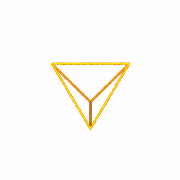compute a tetrahedron's tetravolume given its six edge lengths
I'm pretty sure the first time I saw Gerald's algorithm it was already expressed in source code, Java no doubt. I've also implemented it in Clojure just for fun and suggest on my Youtube channel that students use whatever language currently interests them, i.e. use it as a Rosetta Stone entry.
The constant e.g. 288 or 144 (a 2nd root thereof) was already absent from Gerald's version, and returning in tetravolumes was already the goal. I don't claim that wrinkle came in with the Python.
Given Python's "duck typing" it's easy enough to use the same source code to use arbitrary precision inputs (way beyond floating points in precision) and to use such as the plane nets for A, B, T, E, S modules in Synergetics to get these volumes and to interconvert their expression with Koski's versions, involving Phi (Fuller avoided using both Phi and Pi in his invented language of Synergetics, whereas adding Phi back in simplifies a lot of the dimensions).
I've also been frequenting a certain Wayne Roberts Principles of Nature website wherein he proves how the area of what he calls a "eutrigon" (one or three angles set to 60 degrees) is A x B where A, B are the lengths including the 60 degree angle, and C is the opposite edge connecting A to B. Multiplication is a matter of specifying the two sides and "closing the lid" (adding C). Lengths 4, 3 would give area of 12 etc.
area in ETUs
Using the same volume formula and treating the unit tetrahedron as analogous to Wayne's "ETU" (equilateral triangular unit), I show the model is entirely analogous i.e. lengths A, B, C from a common corner (picture XYZ corner as analog) give A x B x C as the corresponding volume, once again with a "closing the lid" operation, this time on a tetrahedron vs. a triangle.
2 x 2 x 5 = 20
Given the fixed angle of the ABC corner (that of a regular tet), the remaining three lengths are already determined and easy to obtain, for the purpose of feeding into the 6-edge-eating formula above.
I personally don't need a whole worked out math textbook with proofs + index in order to encourage developing coding skills while imagining a reference "sculpture" namely the concentric hierarchy from Synergetics. Your typical arts and design academy, where fluency with computers is baked into the curriculum, would have reasons to include this segment.
concentric hierarchy




